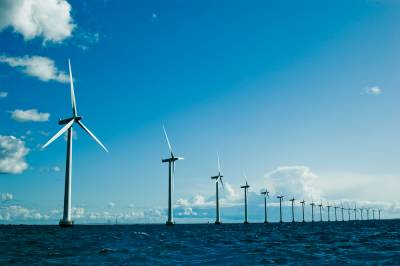 Siemens Project Ventures GmbH has apparently not decided which type of wind turbine foundation to use for its 600 MW Hornsea One project (Heron Wind) in the North Sea, despite having chosen Siemens’ own SWT-6.0-154 wind turbines for the project (a joint venture with Mainstream Renewable Power and DONG). Five years ago, monopiles would have been out of the question in that water depth (25-40 meters), and the prospect of using gravity base foundations would have raised many engineering questions, leaving jackets as the default choice. Today, due to the advent of extra-long monopiles, there is a renewed debate on the subject of foundations. Still, the challenges of monopiles supporting the weight of a 6+ MW turbine 200 meters from the ocean floor and rotating a 154-meter diameter blade on a single pole would seem to be a major concern – bending and buckling in heavy waves and wind, not to mention shipping and installing a monopile of that length.
Siemens Project Ventures GmbH has apparently not decided which type of wind turbine foundation to use for its 600 MW Hornsea One project (Heron Wind) in the North Sea, despite having chosen Siemens’ own SWT-6.0-154 wind turbines for the project (a joint venture with Mainstream Renewable Power and DONG). Five years ago, monopiles would have been out of the question in that water depth (25-40 meters), and the prospect of using gravity base foundations would have raised many engineering questions, leaving jackets as the default choice. Today, due to the advent of extra-long monopiles, there is a renewed debate on the subject of foundations. Still, the challenges of monopiles supporting the weight of a 6+ MW turbine 200 meters from the ocean floor and rotating a 154-meter diameter blade on a single pole would seem to be a major concern – bending and buckling in heavy waves and wind, not to mention shipping and installing a monopile of that length.
The offshore wind industry often takes its engineering, procurement, and construction cues from the offshore oil and gas industry. Of course the weight and physics of offshore oil rigs and production platforms are totally different than wind turbines, and the wind and wave conditions are engineered for every farm, but in general it is a lot easier to make offshore windfarms cost-effective if they are based on proven technologies such as jacket foundations (manufacturing, shipping, installation, operation, maintenance, and decommissioning) repeated in high volume with significant economies of scale, at least in the early stages.
Informed responses would be appreciated. Please comment.
